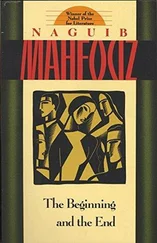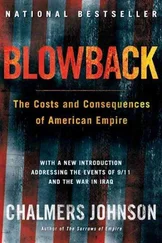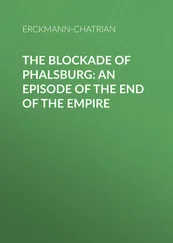Chalmers Johnson - The Sorrows of Empire - Militarism, Secrecy, and the End of the Republic
Здесь есть возможность читать онлайн «Chalmers Johnson - The Sorrows of Empire - Militarism, Secrecy, and the End of the Republic» весь текст электронной книги совершенно бесплатно (целиком полную версию без сокращений). В некоторых случаях можно слушать аудио, скачать через торрент в формате fb2 и присутствует краткое содержание. Год выпуска: 2003, ISBN: 2003, Издательство: Macmillan, Жанр: Старинная литература, на английском языке. Описание произведения, (предисловие) а так же отзывы посетителей доступны на портале библиотеки ЛибКат.
- Название:The Sorrows of Empire: Militarism, Secrecy, and the End of the Republic
- Автор:
- Издательство:Macmillan
- Жанр:
- Год:2003
- ISBN:9780805077971
- Рейтинг книги:4 / 5. Голосов: 1
-
Избранное:Добавить в избранное
- Отзывы:
-
Ваша оценка:
- 80
- 1
- 2
- 3
- 4
- 5
The Sorrows of Empire: Militarism, Secrecy, and the End of the Republic: краткое содержание, описание и аннотация
Предлагаем к чтению аннотацию, описание, краткое содержание или предисловие (зависит от того, что написал сам автор книги «The Sorrows of Empire: Militarism, Secrecy, and the End of the Republic»). Если вы не нашли необходимую информацию о книге — напишите в комментариях, мы постараемся отыскать её.
The Sorrows of Empire: Militarism, Secrecy, and the End of the Republic — читать онлайн бесплатно полную книгу (весь текст) целиком
Ниже представлен текст книги, разбитый по страницам. Система сохранения места последней прочитанной страницы, позволяет с удобством читать онлайн бесплатно книгу «The Sorrows of Empire: Militarism, Secrecy, and the End of the Republic», без необходимости каждый раз заново искать на чём Вы остановились. Поставьте закладку, и сможете в любой момент перейти на страницу, на которой закончили чтение.
Интервал:
Закладка:
Depleted uranium, or uranium-238, is a waste product of power-generating nuclear reactors. It is used in projectiles like tank shells and cruise missiles because it is 1.7 times denser than lead, burns as it flies, and penetrates armor easily, but it breaks up and vaporizes on impact—which makes it potentially deadly in unexpected ways. Each shell fired by an American tank includes between three and ten pounds of DU. Such warheads are essentially “dirty bombs,” not especially radioactive individually but suspected of being capable in quantity of causing serious illnesses and even birth defects. In 1991, American forces fired a staggering 944,000 DU rounds in Kuwait and Iraq. The Pentagon admits that it left behind at a bare minimum 320 metric tons of DU on the battlefield. One study of Gulf War veterans showed that their children had a higher possibility of being born with severe deformities, including missing eyes, blood infections, respiratory problems, and fused fingers. Rokke fears that because the military relied on DU munitions more heavily in the second Iraq war than in the first, postwar casualties may be even greater. When he saw TV images of unprotected soldiers and Iraqi civilians driving past burning Iraqi trucks destroyed by tank fire or inspecting buildings hit by missiles, he suspected that they were being poisoned by DU. 5
Young Americans being seduced into the armed forces these days may thus quite literally be making themselves into “cannon fodder,” even if they have been able to secure noncombat jobs. These men and women comprise an ethnically heterogeneous group that nonetheless differs, in several important respects, from the population from which it is drawn. Because membership in the armed forces is entirely voluntary, they are no longer in any sense a citizen army, even though the Pentagon pretends otherwise. The contemporary military bears almost no relation to the armies that fought in World War II, Korea, and Vietnam—all made up of conscripts. Nor do our forces resemble armies that are based on a universal obligation to defend the country, as, for example, the Israeli army, from which only the religiously devout are exempt. Because today’s soldiers and sailors know that they constitute a special stratum of society, they tend to think of themselves increasingly in distinct, corporate terms—an aspect of militarism—and not as people who expect soon to return to civilian life. Since the military also makes exit easy for those who sign up but find they do not like life in the armed forces, the special subculture of barracks and ships only solidifies further. During 2002, the army was losing 13.7 percent of all recruits during training.
According to the twenty-sixth annual Department of Defense report on “Population Representation in the Military Services,” covering fiscal year 1999, the most recent report available, the full-time active-duty military numbered just under 1.4 million. 6In addition, active reserves—made up of the Army National Guard, the Army Reserve, the Naval Reserve, the Marine Corps Reserve, the Air National Guard, and the Air Force Reserve—totaled just under 871,000. There were also more than 405,000 men and women in the inactive reserve and the inactive National Guard. In fiscal 1999, all the services took in approximately 184,000 new recruits, and nearly 6,000 prior-service members returned to the active-duty ranks. More than 16,000 newly commissioned officers reported for active duty. Also in 1999, about 55,000 recruits without and more than 88,000 with prior military experience enlisted in the reserves. In excess of 17,000 officers entered the National Guard or other active reserve units.
The active-duty military is, of course, much younger than the overall civilian population. Almost half of those in the active-duty enlisted force were seventeen to twenty-four years old, in contrast to about 15 percent of the civilian labor force. Officers were older than those in the enlisted ranks (with a mean age of thirty-four), but they too were younger than their civilian counterparts—college graduates whose mean age was thirty-six. This means that the Americans with whom foreigners come into contact most frequently tend to be late adolescents or twenty-year-old youths, almost totally ignorant of foreign cultures and languages but indoctrinated to think that they represent a nation that President George W. Bush has called “the greatest force for good in history.”
In terms of race and ethnicity, African Americans are overrepresented among enlisted ranks. Some 20 percent of 1999 recruits to active duty were African Americans, who constitute 12.71 percent of the nation’s civilian workforce of military age. African Americans also have higher retention rates in the armed forces, boosting their representation among active enlisted members to 22.5 percent.
Hispanics were underrepresented, making up only 11 percent of new recruits, whereas they constitute 13 percent of the general population. They contributed 9.5 percent of all active-duty enlisted personnel but were overrepresented in combat positions, where they constituted 17.7 percent of the forces who directly handle weapons. Latino underrepresentation can probably be explained by high dropout rates from high school—recruits must be high school graduates or hold an alternative credential—and the fact that many are living in the country illegally. In border cities like San Diego, army recruiters have occasionally crossed into Tijuana to try to sign up young Mexicans with offers of green cards (legal alien residents’ certificates) or possible citizenship after a hitch in the army. 7The navy and the Marine Corps generally recruit more Hispanics than the army and the air force. The Marine Corps has the highest retention rate for Hispanics. “Other” minorities (Native Americans, Asians, and Pacific Islanders), slightly more than 5 percent of the civilian population, made up a further 7 percent of enlistees. Thus, in 1999, 38 percent of the total active-duty enlisted force were people of color (22 percent African American, 9 percent Hispanic, and 7 percent other).
Among officers the percentages were different. Almost 9 percent of newly commissioned officers were African American, 4 percent Hispanic, and 9 percent other. Within the active-duty officer corps, 8 percent were African Americans, 4 percent Hispanics, and 5 percent other. African Americans thus constituted a much smaller proportion of officers than of enlisted men and women. The same pattern holds for the reserves. All three service academies, West Point for army officers, Annapolis for naval and marine officers, and Colorado Springs for air force officers, implement explicit race-preference policies in their admissions. West Point maintains specific percentage goals. It seeks an entering class of 10 to 12 percent African Americans and normally gets 7 to 9 percent. All three academies actively recruit racial minorities, sending promising but under-qualified candidates to one-year preparatory schools before admitting them. (These policies directly contradict those of the Bush administration, which on January 15, 2003, announced its opposition to the University of Michigan Law School’s employment of “affirmative action” to produce a “diverse” student body.)
The military defends its use of race in admissions on the grounds that since 28 percent of air force enlisted personnel and 44 percent of army enlisted personnel are racial minorities, an all-white officer corps would hurt morale, a possibility that also brings to mind fears of the “fraggings” of the Vietnam War era, when enlisted men conscripted into a war they did not support sometimes lobbed or rolled grenades into officers’ quarters. 8In many of the 209 reported fragging incidents in Vietnam, the men who tossed grenades or shot their officers were African Americans and the targets of the attacks were mostly white junior field officers. Racism in the armed forces was clearly a contributing cause. In a January 2003 background briefing at the Pentagon on the all-volunteer force, the issue of fragging came up. “Not a pretty picture,” commented the senior defense official who gave the briefing. There was at least one fragging incident, on March 23, during the subsequent war in Iraq. 9
Читать дальшеИнтервал:
Закладка:
Похожие книги на «The Sorrows of Empire: Militarism, Secrecy, and the End of the Republic»
Представляем Вашему вниманию похожие книги на «The Sorrows of Empire: Militarism, Secrecy, and the End of the Republic» списком для выбора. Мы отобрали схожую по названию и смыслу литературу в надежде предоставить читателям больше вариантов отыскать новые, интересные, ещё непрочитанные произведения.
Обсуждение, отзывы о книге «The Sorrows of Empire: Militarism, Secrecy, and the End of the Republic» и просто собственные мнения читателей. Оставьте ваши комментарии, напишите, что Вы думаете о произведении, его смысле или главных героях. Укажите что конкретно понравилось, а что нет, и почему Вы так считаете.











